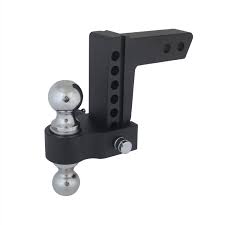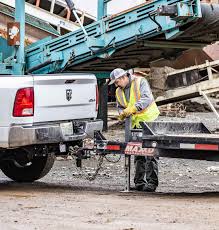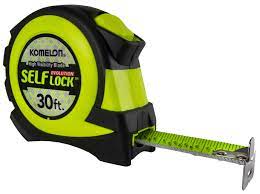How to Measure for a Drop Hitch
When towing you have to take into consideration a number of aspects not least of which is ensuring stability and maintaining a level load. Part of maintaining a level load includes ensuring that the trailer is not connected too high or too low in comparison to the hitch on the tow vehicle.
In this article we are looking specifically at drop hitches and how to measure then to ensure a good connection between tow vehicle and trailer. This is a major safety concern so knowing how to measure for a drop hitch is very important.
Why Do You Need to Measure for a Drop Hitch?
If you are really really lucky then your trailer will match perfectly the height of the trailer hitch on your car or truck. However as not all trailers are made equal this is seldom the case so just attaching the trailer to your ball mount and rolling out is likely not going to happen.

The reality of life is that with so many tow vehicles available and such a wide variety of trailers you would be fortunate to get a perfect match without some extra work involved. The trailer hitch rise and drop will likely not match up perfectly so this difference is important. You will need to make use of a drop hitch measurement which can help you to determine how to compensate for the difference.
Why Is a Drop Hitch Important for Towing?
As mentioned the main reason for a drop hitch is to ensure that your trailer remains level while towing. A slight angle forward can cause cargo to shift forward under hard braking whereas a tilt backwards can cause issues while accelerating.
You need a perfectly level and straight trailer set up to ensure as easy a towing job as possible. An unbalanced trailer can be a risk to you, your passengers and other road users. It can cause trailer sway or wobbling which at high speeds can quickly become dangerous or even deadly.

Excess downward pressure on your tow vehicle's rear end can shift weight from the front tires creating issues with steering and control. The importance of a good match between hitch and trailer can not be emphasized enough.
Even if you do not factor in safety concerns a poorly balanced connection can cause a noisier ride and a difficult drive. It can also cause damage to both trailer and tow vehicle over time which could lead to costly repairs.
What Do Drop Hitches Do?
The drop hitch gives you the capability to adjust the height of the trailer hitch receiver or tow ball mount. This means that you can switch between different trailers easily without changing vehicles or making a major alteration to tow vehicle or trailer.
Drop hitch receivers will generally fit into a standard receiver opening and there are some drop hitches that can be built into the tow bar itself. It is dependent on design but a drop hitch can offer you between 2 and over 12 inches of fixed or adjustable height. This offers up a good range for potential trailers you can attach to your tow vehicle.
A fixed drop hitch gives you less range so isn’t as good if you may be working with several different types of trailer. In the event you need more flexibility then the adjustable drop hitch receiver may well be your best choice.
Ultimately these drop hitches give you a range of heights to choose from which allows you the flexibility to tow different types of trailer. With more static set ups you would have to make major changes to accommodate a range of trailers or else use only one type with a set height.
What Do You Need to Measure for a Drop Hitch?
The first and most important requirement when measuring for a drop hitch is that both your tow vehicle and the trailer are sat on level ground. Your trailer should also be already loaded as there can be a difference in height between an unloaded and a loaded trailer.

The trailer must be sitting level and have a trailer jack or trailer kickstand to hold up the tongue at the correct height. Finally the most technological tool you will need for this process is a good old fashioned tape measure. If you don’t have a tape measure a ruler or square will work just as well as long as they are long enough and have clear measurement markings.
How to Measure for Rise and Drop for a Ball Mount or Drop Hitch
This process is not at all difficult; essentially you just need two measurements, hitch height and coupler height. The hitch height refers to the tow vehicle while the coupler height is in reference to the trailer.
The hitch height is measured from the ground to the inside wall at the top of the receiver opening. This means the hitch must already be installed to make this measurement. Ensure you measure to the inside top of the receiver as the thickness of the receiver tube should not be factored into this.
When it comes to measuring the coupler height you measure from the ground to the bottom surface of the coupler. As with the receiver this is to the bottom of the coupler so as not to take into account the thickness of the coupler. That dimension may not be much but it may make a difference if factored unnecessarily.
Once you have both measurements it is time to compare them. If the hitch height is higher than the coupler height then the trailer is sitting too low to comfortably be attached to the tow vehicle. This means you will need a drop hitch or a tow ball mount with a drop. The drop measurement as you might imagine is equal to the difference between the hitch receiver and the coupler.
If however the coupler sits higher than the hitch receiver then the trailer is sitting too high for your tow vehicle's available hitch height. The answer to this would be a rise hitch or a tow ball mount with a rise. Again the rise distance equals the difference between the hitch receiver and coupler measurements.
Conclusion
Measuring for a drop hitch is important especially if there is a notable disparity between the hitch receiver height on your tow vehicle and the coupler height on your trailer. You need a level trailer and load to safely transport anything by towing and the only way to achieve this is by making sure your hitch and trailer coupler are at roughly the same height.
Link To or Reference This Page
We spend a lot of time collecting, cleaning, merging, and formatting the data that is shown on the site to be as useful to you as possible.
If you found the data or information on this page useful in your research, please use the tool below to properly cite or reference Tow Ratings as the source. We appreciate your support!
-
<a href="http://towratings.net/blog/how-to-measure-for-a-drop-hitch/">How to Measure for a Drop Hitch</a>
-
"How to Measure for a Drop Hitch". Tow Ratings. Accessed on April 18, 2024. http://towratings.net/blog/how-to-measure-for-a-drop-hitch/.
-
"How to Measure for a Drop Hitch". Tow Ratings, http://towratings.net/blog/how-to-measure-for-a-drop-hitch/. Accessed 18 April, 2024
-
How to Measure for a Drop Hitch. Tow Ratings. Retrieved from http://towratings.net/blog/how-to-measure-for-a-drop-hitch/.